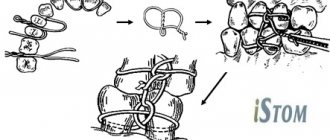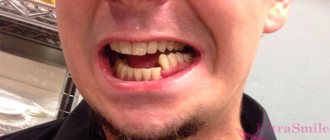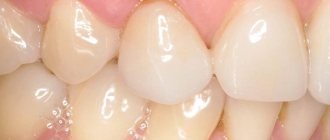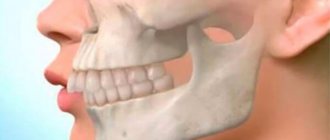We correctly pronounce various sounds thanks to good mobility of the organs of articulation. These include the lower jaw, lips, tongue, and soft palate. The accuracy and strength of movements of these organs develop in the child in the process of speech activity.
When speech articulation is impaired, speech therapists at the Yusupov Hospital use gymnastic exercises and innovative voice correction technologies. The goal of articulatory gymnastics is to develop full-fledged movements and certain positions of the organs of the articulatory apparatus, which are necessary for the correct pronunciation of sounds.
Articulation exercises for lips
Speech therapists conduct articulation gymnastics daily so that the skills developed are reinforced. Each exercise is performed 5-7 times. The articulatory pose should be held in one position for 10-15 seconds.
When selecting exercises for articulatory gymnastics, a certain sequence is followed, first simple exercises, and then complex ones. They are carried out emotionally, in a playful way. Articulation gymnasts are performed while sitting, since in this position the child’s body is not tense, the back is straight, and the arms and legs are in a calm position.
The patient must clearly see the speech therapist’s face, as well as his own face, in order to independently control the correctness of the exercises. A child and an adult should be in front of a wall mirror during articulation gymnastics. Children can use a small hand mirror. Then the speech therapist is located opposite the child, facing him.
Articulation gymnastics begins with exercises for the lips. The speech therapist talks about the upcoming exercise, using game techniques, and demonstrates its implementation. Then the child does the exercise, and the adult controls the execution.
The speech therapist monitors the quality of the movements performed by the little patient:
- accuracy;
- smoothness;
- pace;
- sustainability;
- transition from one movement to another.
He pays attention to the fact that the movements of each organ of articulation are performed symmetrically in relation to the right and left sides of the face. Otherwise, articulatory gymnastics does not achieve its goal. If the baby is unable to move, help him with a spatula.
The system of exercises for the development of articulatory motor skills includes both static exercises and exercises aimed at developing dynamic coordination of speech movements.
Children are asked to do the following lip exercises:
- smile - holding the lips in a smile, teeth are not visible;
- tube - stretching the lips forward with a long tube;
- rabbit - lips are closed, the upper lip is raised and exposes the upper incisors.
Next, perform exercises to develop lip mobility:
- tube smile - stretch the lips forward in a tube, then stretch them into a smile;
- the fish talk - clap their lips against each other (a dull sound is pronounced);
- snout - lips, elongated in a tube, move left and right and rotate in a circle.
The “dissatisfied horse” exercise is performed by speech therapists in the following way: the child easily and actively sends a stream of exhaled air to his lips until they begin to vibrate. The result is a sound similar to the snorting of a horse.
The “Fence” exercise develops the ability to hold your lips in a smile, exposing the lower and upper front teeth. The procedure for performing the exercise is as follows: smile, show your upper and lower teeth, hold your lips in this position for a count of five.
Dangers of malocclusion
The bite is the relationship between the lower and upper teeth during closure. If this relationship is disturbed and the teeth do not correspond to those located opposite them when they are closed, it means that there is a malocclusion. This pathology can not only significantly spoil a person’s appearance, provoking the development of an inferiority complex, but also cause serious health problems. The main dangers of malocclusion are:
- difficulties with normal chewing of food, which often leads to digestive disorders;
- difficulty swallowing, causing sore throat;
- caring for teeth becomes more difficult, resulting in an increased risk of developing diseases of the teeth and surrounding tissues - gingivitis, periodontal disease or caries;
- uneven, crooked teeth create additional difficulties in dental treatment at the dentist;
- Improper closure creates constant tension in the jaws, teeth and muscles, causing tooth enamel to wear away faster and increasing the risk of tooth fracture.
Malocclusion creates additional stress on the facial muscles, which often causes headaches and the appearance of early wrinkles.
Tongue exercises
Children perform a set of static exercises for the tongue:
- spatula - the mouth is open, a wide, relaxed tongue lies on the lower lip;
- chicks - the mouth is wide open, the tongue lies quietly in the oral cavity;
- tube - the mouth is open, the lateral edges of the tongue are curved upward.
Then they move on to dynamic exercises for the tongue. During the “clock” exercise, the mouth is slightly open, the lips are stretched into a smile. With the tip of a narrow tongue, the child reaches alternately, at the teacher’s count, to the corners of his mouth. The “swing” exercise in speech therapy is performed as follows: the mouth is open, the child stretches his tense tongue to the nose and chin or to the upper and lower incisors. During the exercise called "football" the mouth is kept closed. With a tense tongue they rest on one or the other cheek.
With the help of the “sail” exercise, the upper rise of the tongue is prepared for the sounds [r], [l]. The child raises his wide tongue to the upper incisors and rests on the alveoli. The speech therapist makes sure that the tongue does not sag, but is tense and wide.
The purpose of the machine gun exercise is to strengthen the vibration of the tip of the tongue for sound. From the “sail” position, the child performs the “woodpecker” exercise and adds an air stream, like a push of air: “D-ddd” + push of a strong air stream. A vibration of the tongue occurs - “drr”. The exercise should be performed intensively 5 times.
How to perform a myogymnast to correct the bite, lips and tongue, orbicularis oris muscle?
Very often among the recommendations of dentists there is myogymnastics in orthodontics. We will describe in more detail what exercises should be done and by whom, the principle of their action, as well as indications for effective results in treatment.
Sometimes it is enough to detect early problems in the formation of a child’s jaw and contact a specialist for help. Then you can prevent many anomalies using simple, accessible and free methods, spending just time practicing with your beloved child.
Exercises to develop mobility of the lower jaw
In speech therapy, to develop speech articulation, exercises are used that promote the development of the lower jaw. These include the “Cowardly Little Chick” exercise:
- open and close your mouth wide so that the corners of your lips extend;
- lower your jaw approximately the width of two fingers;
- The “chick” tongue sits in the nest and does not protrude.
The exercise should be performed rhythmically. Then they simulate chewing with the mouth closed and open.
To perform the “angry lion” exercise, you need to lower your jaw down, extend your tongue as far as possible towards your chin and mentally pronounce the sounds “a” or “e” on a firm attack. It is more difficult to perform the exercise with whispered pronunciation of these sounds.
The child is asked to pronounce proverbs, sayings, tongue twisters, which are full of vowel sounds that require a wide opening of the mouth:
- small but daring;
- I found a scythe on a stone;
- like the fisherman, like the fish;
- the snake has a bite, the hedgehog has a hedgehog;
- a rolling stone gathers no moss.
During the exercises, the speech therapist ensures that the lower jaw drops freely downwards, and vowel sounds are first pronounced a little emphatically.
Bite correction
The most effective way to correct a bite for adults is to wear braces and special gymnastics. Braces put pressure on the jaw and stretch the connective tissue of the gums, resulting in mechanical alignment of a crooked bite. These structures must be worn for a very long time and cannot be removed. The main disadvantage of braces is their negative impact on the enamel. In addition, braces do not look aesthetically pleasing and many people are embarrassed to wear them due to their unattractive appearance.
Other methods of correcting bites at home are mouthguards, veneers and trainers.
Mouth guards
These are special transparent dentures that allow you to safely correct the position of your teeth. They are very comfortable, do not cause discomfort and are almost invisible to others. In addition, aligners do not harm tooth enamel and are easily removed.
Mouthguards are often used not only to restore a normal bite, but also to whiten teeth. The only significant drawback of these structures is their high price, so people with low incomes are better off considering other options for correcting their bite.
Veneers
This method involves gluing special porcelain plates to the teeth. These plates are invisible from the outside because they are transparent. Veneers can correct the shape and position of teeth, as well as get rid of gaps between teeth.
Veneers can be full or partial. Full ones are worn entirely over crooked teeth, while partial ones hide only the visible parts of uneven teeth. These designs are resistant to external factors, last a very long time and do not cause discomfort while wearing.
Trainers
These designs are used only in childhood. They are made of silicone material, they are very comfortable and help to successfully combat malocclusion.
Trainers do not have to be worn all the time. You can wear them for just a couple of hours a day, as well as at night. Another important advantage of these structures is that they not only restore normal closure of the teeth, but also help the child keep the tongue in the mouth in the correct position, i.e. eliminate the very root cause of malocclusion.
Training the muscles of the pharynx and soft palate
Speech articulation is improved by exercises that strengthen the muscles of the soft palate and pharynx:
- yawning with open and closed mouth;
- yawning with a wide opening of the mouth, noisy intake of air;
- voluntary coughing;
- imitating gargling with your head thrown back.
The child can be asked to gargle with a heavy liquid (kefir, jelly, juice with pulp), swallow water in small portions (20 - 30 sips), and puff out his cheeks with his nose pinched. You can imitate whistling, moaning, mooing.
Myogymnastics for malocclusion
Depending on the shape of the occlusion and the intensity of the defect, the following exercises are prescribed.
- Stand up straight, extend your arms and bring them back. Raise your chin and try to push it forward as much as possible. Periodically return to its original position. Do up to 10-15 repetitions in one session. You need at least three approaches per day.
- Gradually increase the load and after 30 days make it more difficult. By pulling the lower jaw forward, they try to position the incisors in front of the upper ones.
- In addition, it is proposed to perform a special Rubinov exercise. To do this, you need to close and open your mouth without any displacement for at least 3-5 minutes. Repeat at least five times a day.
- You need to strongly squeeze and unclench your teeth. To check how well the child is doing, you can press your fingers to your face in the area where the molars are growing.
- To add gain, do the same thing, but with increased resistance. Place the index and middle fingers on the front part of the row and, when opening the mouth, try to prevent active movements of the jaw. Thus, a person puts in much more effort, working the right muscles well.
- Another exercise is done using a pencil or stick of a suitable size. A rubber tube is placed on this object and bitten with the incisors.
► Treatment of mesial occlusion involves the following effects:
- They try to reach out with their tongue and press hard on the back of the palate. Do this for 3-5 minutes or until the first feeling of muscle fatigue.
- They throw back their head and open and close their mouth. When the jaws are closing, you need to reach with your tongue towards the far edge of the palate.
- Over the course of some time, the lower jaw is pulled forward until the upper incisors are completely covered.
► If a crossbite is detected: open the jaws wide, trying to move the lower one to the side where the problem area is observed. And then they close them in the same position and hold for up to five seconds.
► For the treatment of distal occlusion, the following is recommended:
- They try to pull the lower row of teeth forward so that it is in front of the upper one. Hold the position for at least 10 seconds.
- Complicate the previous version by simultaneous turns of the head, first to the left, then to the right. Repeats are performed 10 times.
- You need to put your feet shoulder-width apart, throw your head back, and put your hands behind your back. Try to push the lower jaw so that the edges of the teeth meet.
Speech therapy exercises for distinguishing sounds by ear
The purpose of the games and exercises below is to develop auditory attention and phonemic awareness. They help teach children to hear sounds in words, to differentiate certain pairs of sounds by ear and in pronunciation (s - z, s - c, c - ch, sh - zh, ch - shch, s - shch, z - zh, l - r ), correctly highlight the necessary words in phrases.
Games for children from two to four years old are based on onomatopoeia:
- how does a child cry? – AAA;
- How does the water flow? - SSS";
- how does a wolf howl? - UUH.
Another game for the little ones is “Song”. The speech therapist shows cards symbolizing vowel sounds - A, U, O, I in different orders, and the children sing a song.
The game of identifying the sound against the background of the word “Catch the sound” is carried out as a physical education minute. Children should jump up and clap their hands if a given sound is heard in the named word (for example [k]).
The goal of the game "Hunters" is to develop phonemic awareness. The speech therapist invites children to learn to catch sounds. He asks the children to pretend that they are sleeping (so as not to be startled by the sound): put their heads in their hands, close their eyes. Having heard the desired sound among other sounds, you need to “wake up” (sit up straight).
To set sounds in speech therapy, the “Window” exercise is used. The child is taught to keep his mouth wide open. The exercise activates the orbicularis oris muscle and the mobility of the upper lip. The child learns to lower the root of the tongue and move the tongue close to the teeth. The baby is asked to smile, open his mouth wide and move his relaxed tongue close to his teeth. You should hold the position for a count of five. During the exercise, the speech therapist makes sure that the baby’s lips are stretched, the teeth are visible, the root of the tongue is lowered, and the tongue is located symmetrically in the oral cavity.
What is myogymnastics?
This is a specific set of exercises for the facial and chewing muscles, which are located around the dentition and in one way or another affect its formation. With their help, you can change the beginning of bite defects, improve diction, and also partially influence the correct formation of the jaw and facial contours. It is not surprising that myogymnastics occupies such an important place in orthodontics.
Its use is especially effective for children 4-7 years old. It is believed that after a child reaches 9 years of age, these exercises are no longer able to act as a therapeutic method. Yet they are often prescribed in addition to other orthodontic treatments on the dental system.
A. Rogers developed the first diagnostic parameters and gymnastic complexes of this type back in the last century. Based on his work, new exercises are being developed in dentistry today, trying to prevent or correct most problems in the functioning of the jaw muscles.
Facial myogymnastics is most often prescribed in the following variations:
- as an independent method of treatment;
- as preparation for any orthodontic interventions;
- or as an additional influence during such correction;
- to consolidate the result after special treatment;
- and as a method of preventing future jaw function.
Breathing exercises in speech therapy
Training the articulatory organs and the development of speech breathing is one of the main points in the structure of speech correction classes with children who have defects in the pronunciation of sounds. Articulation and breathing exercises play a particularly important role in the correction of dysarthria. Speech therapists at the Yusupov Hospital consistently use various types of gymnastics. First, general motor exercises are performed, followed by breathing exercises, then vocal exercises, and only at the end articulation exercises.
Breathing exercises begin with general breathing exercises. Their goal is to increase breathing volume and normalize its rhythm. The patient is taught to breathe with his mouth closed. They train nasal exhalation by telling the baby: “Inhale deeply and exhale for a long time through the nose.” Then they practice mouth exhalation, while closing his nostrils. Exercises with resistance are used when the speech therapist places his hands on the chest, as if preventing inhalation for 1-2 seconds. They teach you to hold your breath, achieving a deep, quick inhalation and a slow, long exhalation.
Breathing exercises are performed using game techniques. “Bubbles” – use a straw and a glass of water. The speech therapist pays attention to the fact that the exhalation is long, that is, the bubbles should “come out” for a long time.
It is fashionable to use all kinds of whistles and pen caps for children's musical instruments.
“Focus” is an exercise with a piece of cotton wool that prepares you for pronouncing the sound [r]. The speech therapist places cotton wool on the tip of the nose. The patient is asked to stretch out his tongue, bend its tip up and blow on the cotton wool to blow it off the nose.
You can suggest blowing on the flame of a burning candle so as not to blow it out, but only slightly deflect the flame. You should blow carefully, slowly, for a long time. The same exercise is used when producing whistling and hissing sounds.
Advantages and disadvantages of the technique
Like any other method, myogymnastics has its pros and cons. The most important advantage is considered to be non-traumatic and the possibility of treatment without the use of additional devices. This type of therapy does not cause any significant psychological discomfort in patients.
Unfortunately, there are also disadvantages:
- To achieve noticeable results, gymnastics must be performed for several weeks or even months.
- If training is not regular, a rollback quickly occurs, that is, all achieved results are lost.
- The method will not give a visible result with pronounced and long-standing changes.
Medical technologies in speech therapy
Biofeedback is a unique medical technology of the 21st century. It is based on the use of modern electronic equipment. The technique allows anyone to learn how to control their body and allows them to treat the following speech disorders:
- stuttering;
- speech anxiety;
- violation of the tempo of speech;
- violation of sound pronunciation (at the stage of automation of sounds and their introduction into speech);
- reading disorders.
Speech therapists use the following types of art therapy in the treatment of speech disorders:
- music therapy;
- kinesiotherapy;
- fairytale therapy;
- mnemonics;
- creative play therapy (sand therapy).
Body-oriented medical technologies used in speech therapy include stretching, relaxation exercises, and breathing exercises. Rehabilitation specialists at the Yusupov Hospital perform massage of the muscles of the peripheral speech apparatus for speech disorders. It helps to normalize muscle tone and thereby prepare the muscles to perform complex movements that are necessary when articulating sounds.
Finger massage of the palmar surfaces with stone, metal or glass multi-colored balls, clothespin massage and others are included in the rehabilitation program for patients with speech disorders. If you have a speech disorder, call the Yusupov Hospital.
Advantages and disadvantages
The effectiveness of myogymnastics is determined by the following advantages:
- restores full functionality of the masticatory muscles;
- normalizes the overall tone of the face;
- improves the functioning of the lower jaw, making it more mobile;
- influences the development of essential joints.
The advantage of the method is that it is applicable not only in orthodontics, but also in speech therapy, having a positive effect on diction.
True, there are some disadvantages:
- when performing special exercises, it is quite difficult to control the correct impact on the desired muscles and accurately set the required duration of the session;
- Unfortunately, not all forms of malocclusion and other jaw anomalies are amenable to such effects, and for adults they turn out to be ineffective.
How to increase the effectiveness of exercises?
Children with the same orthodontic disorders may experience different results after performing gymnastics. This happens not due to the individual characteristics of the body, but due to non-compliance with important recommendations. To maximize the effectiveness of myotherapy, you must remember 5 basic rules.
- Constantly increasing the duration and speed of muscle contractions.
- Muscle contraction with maximum amplitude.
- Perform gymnastic complexes until you feel tired.
- Presence of breaks between muscle contractions.
- Performing exercises at a strictly defined time and must be done daily.
Correct and regular performance of myogymnastics leads to effective correction of the bite and elimination of TMJ dysfunction in children aged 4 to 7 years. Adults will have to use more complex orthodontic correction methods.
To correct any dysfunction, you have to make some effort. Despite the fact that there are many different treatment methods in orthodontics, doctors recommend taking preventive measures to prevent the development of pathologies. To prevent the occurrence of dysfunction, it is important to seek advice in a timely manner. A dentist will tell you about the common causes of violations in the final video.
Reviews
We do these exercises with the child. At first I was worried that I wouldn’t be able to force him to do gymnastics. But with us, everything happens in a playful way, so my son doesn’t even suspect that we are being treated at this time.
A speech therapist prescribed similar exercises for the child, but I did not believe that any problems could be solved with their help. After six months, not only did my diction improve, but the dentist also noted good results.
Having suffered with plates and braces at one time, I saw that the same fate awaited my daughter, since from the very beginning the teeth grew in different directions. But after talking with a good dentist, they began to do myogymnastics. The results are wonderful! It's entirely possible that my child won't be wearing terrible designs as a teenager.
How to increase the effectiveness of exercises?
To achieve the best results, you need to adhere to a certain technique and the following rules:
- Actively work the muscles with maximum amplitude.
- But at the same time, the physiological limits of permissible movements are maintained.
- Gradually increase the speed, intensity and difficulty of each exercise.
- To remain safe, you need to allow your muscles to rest for exactly the same amount of time as they worked before.
- Repeat each movement until you feel tired.
- Set aside a specific time for classes and strictly follow it on a regular basis.
Video: about myogymnastics.










